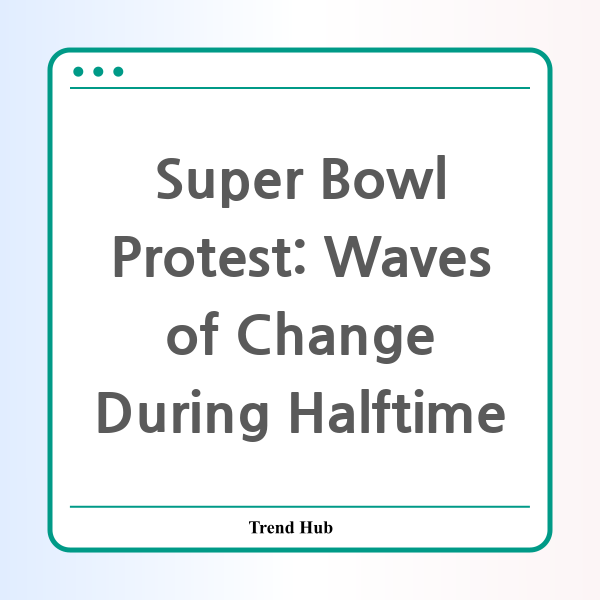* This website participates in the Amazon Affiliate Program and earns from qualifying purchases.

What happens when a cultural event becomes a platform for protest? At Super Bowl 59, an unexpected moment unfolded as a performer boldly waved flags in a striking demonstration during the halftime show. This incident raises important questions about activism, visibility, and the consequences of using such a major platform for political statements.
The spectacle of the Super Bowl halftime show, widely regarded as one of the most glamorous events in American sports, turned into a scene of protest when a performer revealed flags representing Sudan and Palestine. The protester, concealed among a 400-member cast, drew immediate attention when he displayed the flags during a performance by renowned rapper Kendrick Lamar. This act of solidarity highlighted pressing humanitarian issues and ignited discussions about the role of sports in social activism.
As Lamar transitioned from his powerful track "Not Like Us" to his closing song, "TV Off," the protest unfolded. Video footage captured the moment as the individual, clad in matching black sweats, jumped onto the hood of a classic Buick Grand National GNX that featured prominently in the performance. His flags bore the inscriptions "Sudan" and "Gaza," adorned with symbols of solidarity and love. The brief moment of protest quickly turned chaotic as security apprehended the performer and escorted him from the field.
The NFL responded promptly, announcing a lifetime ban for the protester from all league events, emphasizing that the individual’s actions were not part of the planned production. This decision has sparked debates regarding the implications of such a ban, particularly in the context of freedom of expression and the capacity of sports to serve as a stage for vital social issues.
Leading up to the Super Bowl, the world was already buzzing with political tension surrounding the Gaza proposal by former President Trump, an initiative that drew widespread criticism for its implications on Palestinian rights. The juxtaposition of the Super Bowl with these global humanitarian crises—particularly those in Sudan and Gaza—was not lost on viewers. By displaying these flags, the protester aimed to shift the focus of the entertainment spectacle back to the realities faced by millions in conflict-ridden areas.
While the NFL emphasized that the protest was unexpected and unsanctioned, it’s crucial to recognize the courage it takes to make such a statement on a global platform. Various organizations, including the Council on American-Islamic Relations, have hailed the protester as a hero, highlighting the importance of recognizing and addressing humanitarian suffering abroad. Many believe that protests like these can serve as a wake-up call, bringing awareness to neglected crises that are often overshadowed by more immediate concerns.
This incident has reignited discussions about the intersection of sports, politics, and social responsibility. As athletes and performers continue to express their perspectives on significant issues, the question remains: Should the stage of the Super Bowl serve as a platform for advocacy? The response will likely vary among fans, sports executives, and activists, but one thing is certain: the impact of the protest will resonate long after the final whistle of the game.
The 59th Super Bowl halftime show not only showcased Kendrick Lamar's artistry but also reflected the complexities of our current sociopolitical climate. The actions of the protester serve as a reminder of the power of visibility and the potential for sports to cross the boundaries of entertainment and activism.
* This website participates in the Amazon Affiliate Program and earns from qualifying purchases.